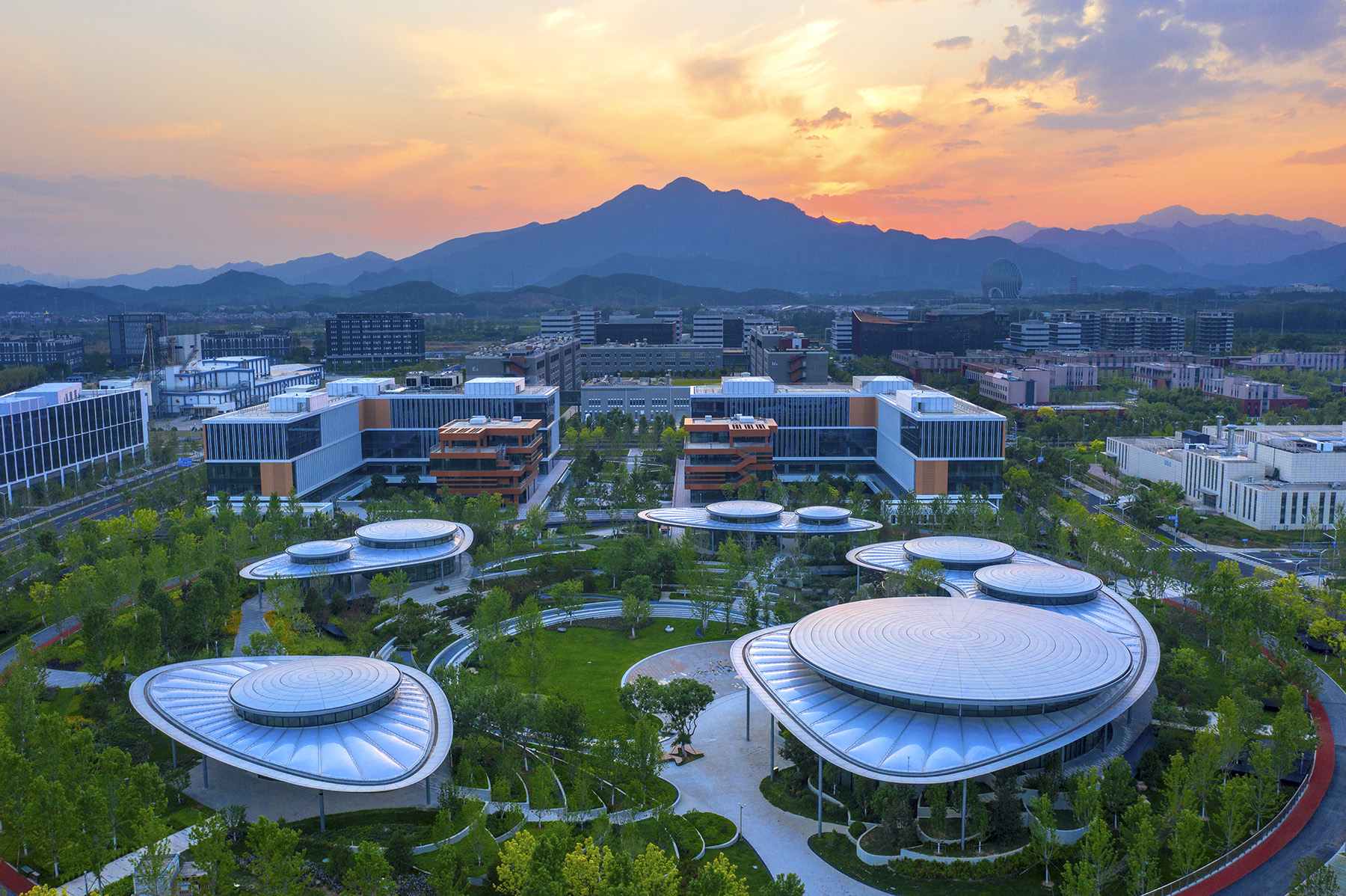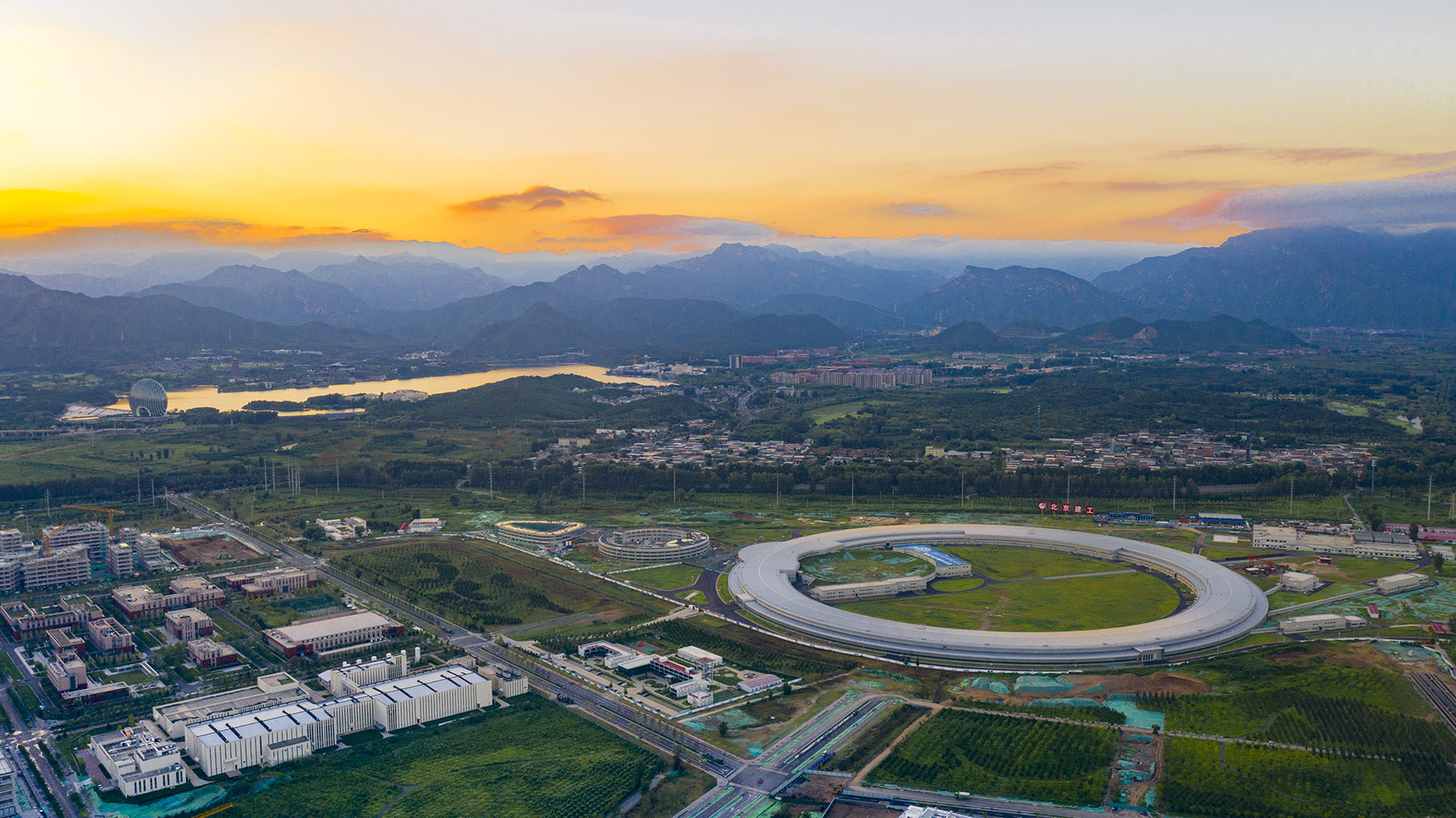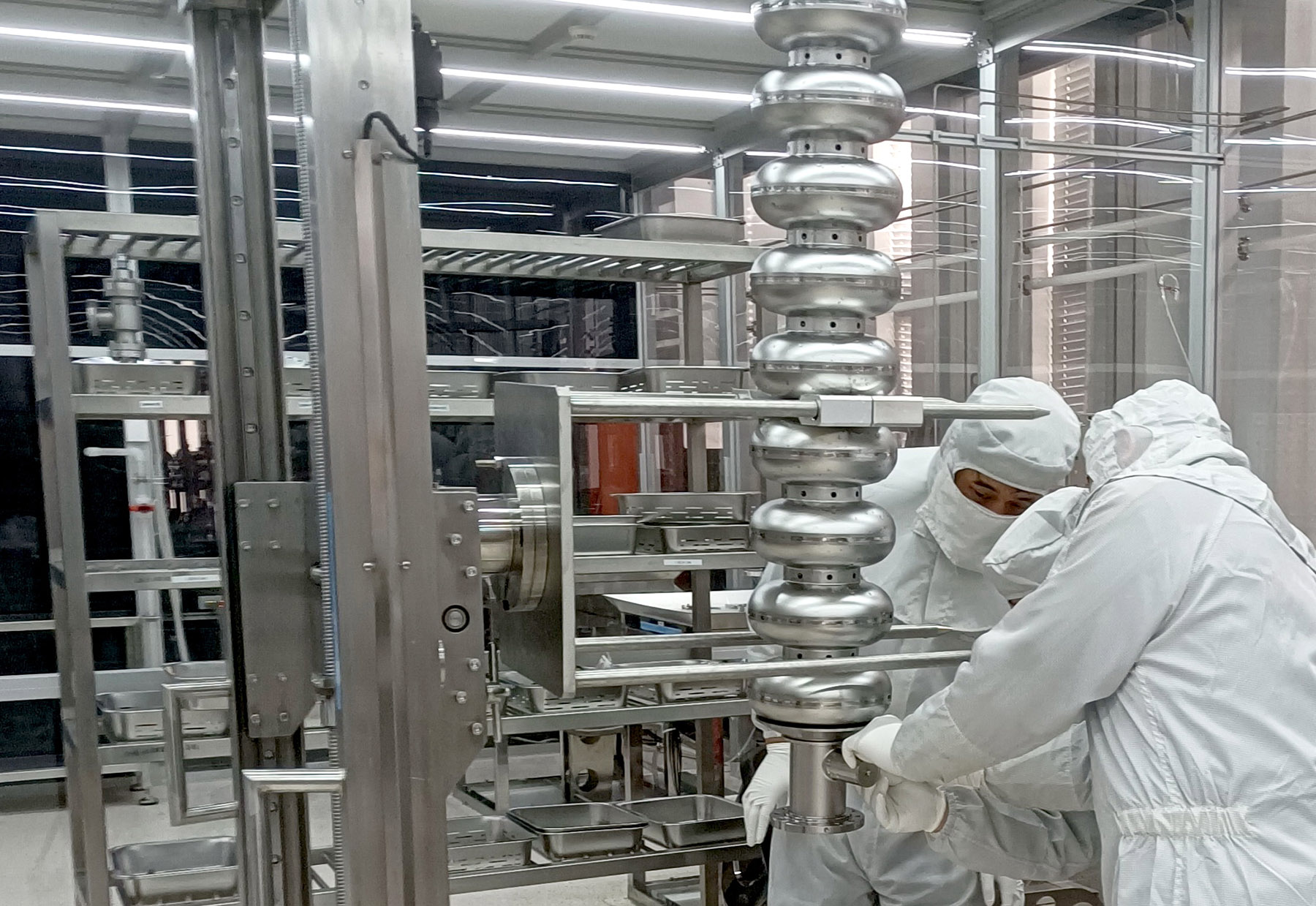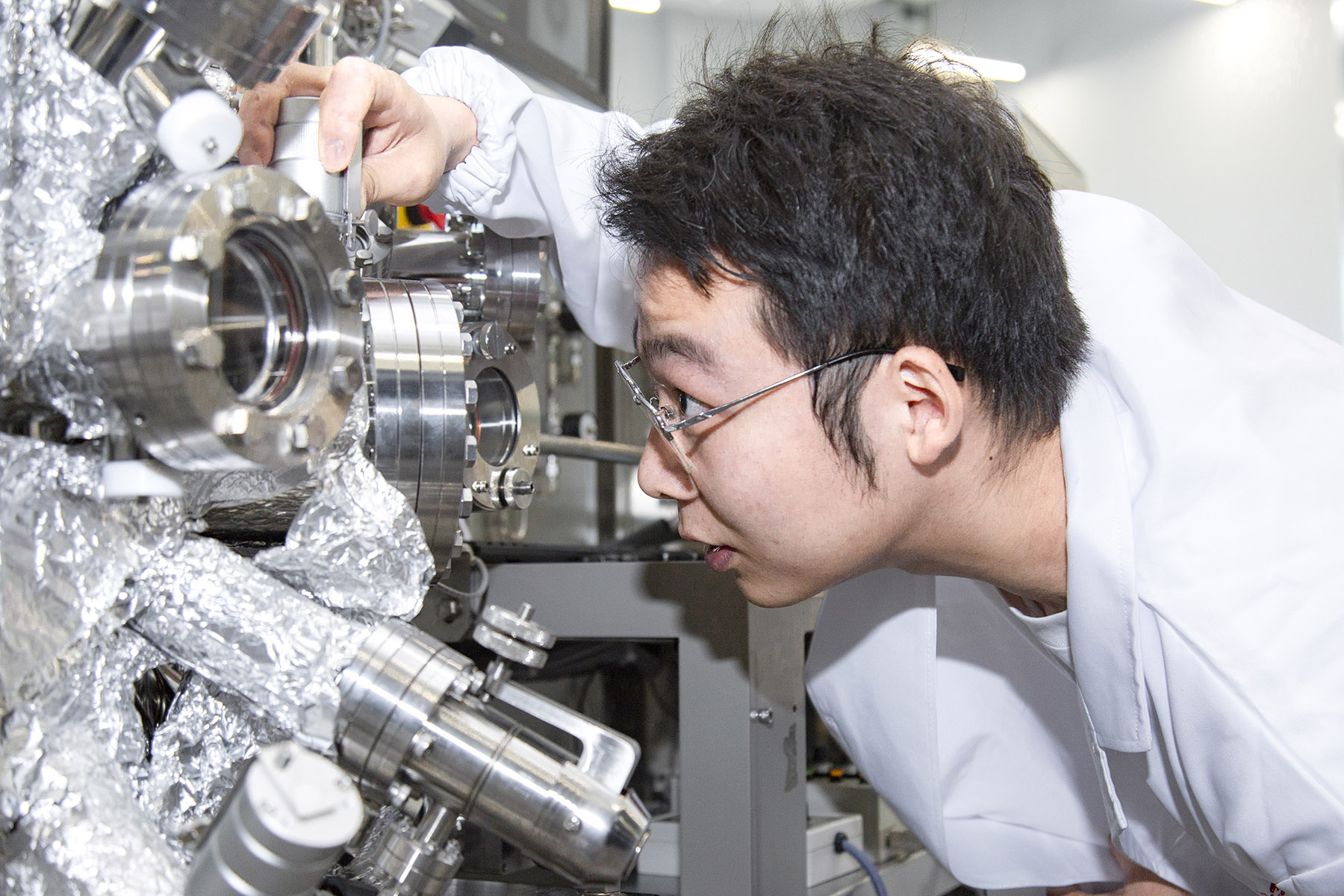Tech center hour's drive from central Beijing already home to more than 37 innovative sites

It was in May 2017 that a sparsely populated suburb dotted with farmland received approval to be developed into a global high-tech and innovation hub named Huairou Science City, an hour's drive from central Beijing.
Seven years later, it is home to more than 37 science facilities, including six major national scientific and technological ones, a key project to drive important scientific innovations.
It is now one of the most densely packed areas for groundbreaking scientific research.
Not only that, Huairou Science City has attracted over 23,000 leading researchers, including 77 academicians from the Chinese Academy of Sciences and the Chinese Academy of Engineering, 28 highly cited international scientists, and over 600 foreign experts.
This quick transformation is part of Beijing's broader efforts to develop a lively science center that integrates basic science and research, scientific and technological services, to drive the country's innovative development on the global stage.
READ MORE: China sets hot pace for science and tech innovation
Huairou Science City is also one of the four science centers outlined in China's 14th Five-Year Plan (2021-25) for national economic and social development and long-range objectives through the year 2035.
The other science centers are located in Zhangjiang, Shanghai; Hefei in Anhui province; and the Guangdong-Hong Kong-Macao Greater Bay Area.
As the first rays of the sun illuminate a multimodal biomedical imaging center cradled by several surrounding laboratory buildings, equipment inside the advanced biomedical imaging facility, dubbed the National Multimode Trans-Scale Biomedical Imaging Center, is scanning and imaging the entirety of a human body to visualize diseases.

Whether it is the minor details of a single cell or the intricacies of a complete organ, the high-end equipment is able to image data into a cohesive whole with unprecedented precision.
With its potentially significant role in biomedical research, the center has been recognized as a major national scientific and technological facility.
Sun Yujie, deputy head of the Academy for Advanced Interdisciplinary Studies at Peking University and deputy director of the National Biomedical Imaging Center, said: "As the development of contemporary life sciences is inseparable from imaging technology, such a biomedical imaging facility will help create a 'life observatory' from macro to micro scales for better advancement of human life."
Following its initial trial operation at the end of last year, the center promises to provide unprecedented precision in visualizing disease progression and enable comprehensive research and analysis of significant biomedical scientific questions, Sun added.
Similar to this center, other major scientific and technological ones in Huairou Science City include the Synergetic Extreme Condition User Facility, High Energy Photon Source, Earth System Science Numerical Simulator Facility, Ground-based Space Environment Monitoring Network and Human Organ Physiopathology Emulation System.
In addition, the city is also home to 37 science facilities that span material, space, life, earth systems, and information and intelligence; 14 cross-disciplinary research platforms covering material genome research and advanced light source technology research and testing; as well as 17 foundational scientific and educational facilities, including an intelligent analysis and testing platform for new and emerging infectious disease vaccines and antibodies.

As of now, the construction of 29 facilities and platforms has already been completed, with 16 currently operational. The momentum has continued this year, with eight new facilities and platforms being introduced and some already commencing construction.
With such major science facilities put into use, a corresponding industrial system is also accelerating its construction in Huairou Science City, to translate such technological advances into application or commercialization.
In March, Beijing Chunfeng Pharmaceutical, a high-tech pharmaceutical group, expanded its second factory in Huairou Science City.
According to Li Yi, an executive of the pharmaceutical company, as a high-tech modern pharma group, the company is in urgent need of expansion and upgrading, and Huairou Science City offers "sound fertile soil".
Li said the company plans to develop a 70,000-square-meter project in the city, including an intelligent drug production workshop, an inspection center, a medical device achievement transformation center, an academician workstation and a traditional Chinese medicine culture exchange and exhibition center.
"Once completed, the project is also expected to boost the entire industry chain in the life sciences sector for Huairou Science City," Li said.
In order to convert scientific and technological achievements into applications or commercialization, Huairou Science City has been attracting more companies in the industry chain, especially in high-end science facilities and sensors, new energy and new materials as well as life sciences.
In the life sciences sector, for instance, the city has attracted 20 big biopharmaceutical companies or projects in the sector of medical imaging detection and pathological analysis, brain science and information science, and cell and gene therapies.

More innovation
How will Huairou Science City remain a magnet for continuous technological innovations?
For instance, Shing-Tung Yau, or Qiu Chengtong, one of the most influential mathematicians globally, and Zeng Qingcun, a famous meteorologist from the Chinese Academy of Sciences who received China's top science award, have been enticed to work in the city.
Young talents also continue to inject vitality.
In 2016, to address the bottleneck problem of low-temperature strong magnetic fields, several PhD graduates from the Chinese Academy of Sciences jointly founded Multi-Fields Tech.
According to its founder Cong Junzhuang, the company mainly consists of talented people under the age of 30, with the youngest PhD student born in 1997.
As the company moved into Huairou Science City, the Huairou government offered substantial support by way of rent reductions, financial investment and personnel settlements, he said.
"With such support, the company is now in rapid development. We are able to not only provide the country technical support for related fields, but also possess sufficient competitiveness in the international market," Cong added.
Industry experts believe that such top-level talent will inject a steady stream of vitality into the construction of an international innovative ecosystem and continuous scientific and technological development of Huairou Science City.
ALSO READ: China's new light source sets milestone in construction
According to its development plan, Huairou Science City is expected to basically form an urban framework for growth, significantly enhance its influence and become an important support for the country's construction of an international science and technology innovation center.
By 2035, it aims to become an internationally renowned science city and national science center, offering crucial support for Beijing's development as an international science and technology innovation center and for China's advancement to the forefront of innovative countries.
By 2050, the city has vowed to fully develop into a world-leading science city and national science center to support China's emergence as a global science and technology powerhouse.
Public transportation between Huairou Science City and the main roadways of Beijing, particularly downtown, will also soon witness improvements, making it much easier to get to and from the remotely located science park.


